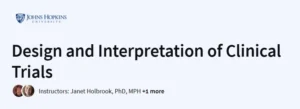What will you learn in this Antimicrobial resistance – theory and methods Course
Understand the global challenge and biological mechanisms of antimicrobial resistance (AMR).
Perform antimicrobial susceptibility testing using disk diffusion, agar dilution, and broth microdilution.
Apply molecular techniques such as PCR and whole genome sequencing for resistance identification.
Use bioinformatics tools like ResFinder and MyDBFinder to analyze resistance genes.
Interpret testing data for use in clinical and public health decision-making.
Program Overview
1. Antimicrobials and Their Actions
⏳ 1 week
Study the classification and mechanism of action of various antimicrobials and how they interact with microorganisms.
2. Antimicrobial Resistance Mechanisms
⏳ 1 week
Learn how resistance develops and spreads, including intrinsic and acquired resistance, and horizontal gene transfer.
3. Antimicrobial Susceptibility Testing (AST)
⏳ 1 week
Get hands-on with lab techniques such as disk diffusion, agar dilution, and broth microdilution to determine resistance patterns.
4. Whole Genome Analysis Tools
⏳ 1 week
Explore genotypic alternatives to phenotypic testing using advanced tools like ResFinder for DNA-based resistance detection.
5. Detecting Specific Resistance Mechanisms
⏳ 1 week
Dive deeper into methods like PCR for targeting specific resistance genes and mobile genetic elements.
6. Quality Assurance in Testing
⏳ 1 week
Understand the importance of control strains and best practices in laboratory quality assurance.
7. Final Assessment
⏳ 1 week
Complete a comprehensive exam testing both theoretical understanding and practical knowledge.
Get certificate
Job Outlook
Prepares learners for roles like Clinical Microbiologist, AMR Researcher, Public Health Specialist, and Infection Control Officer.
High demand in hospitals, public health labs, research centers, and pharmaceutical companies.
Supports career advancement for those working in infectious diseases, diagnostics, and microbiological R&D.
Helps bridge the gap between molecular microbiology and real-world healthcare solutions.
Specification: Antimicrobial resistance – theory and methods Course
|





